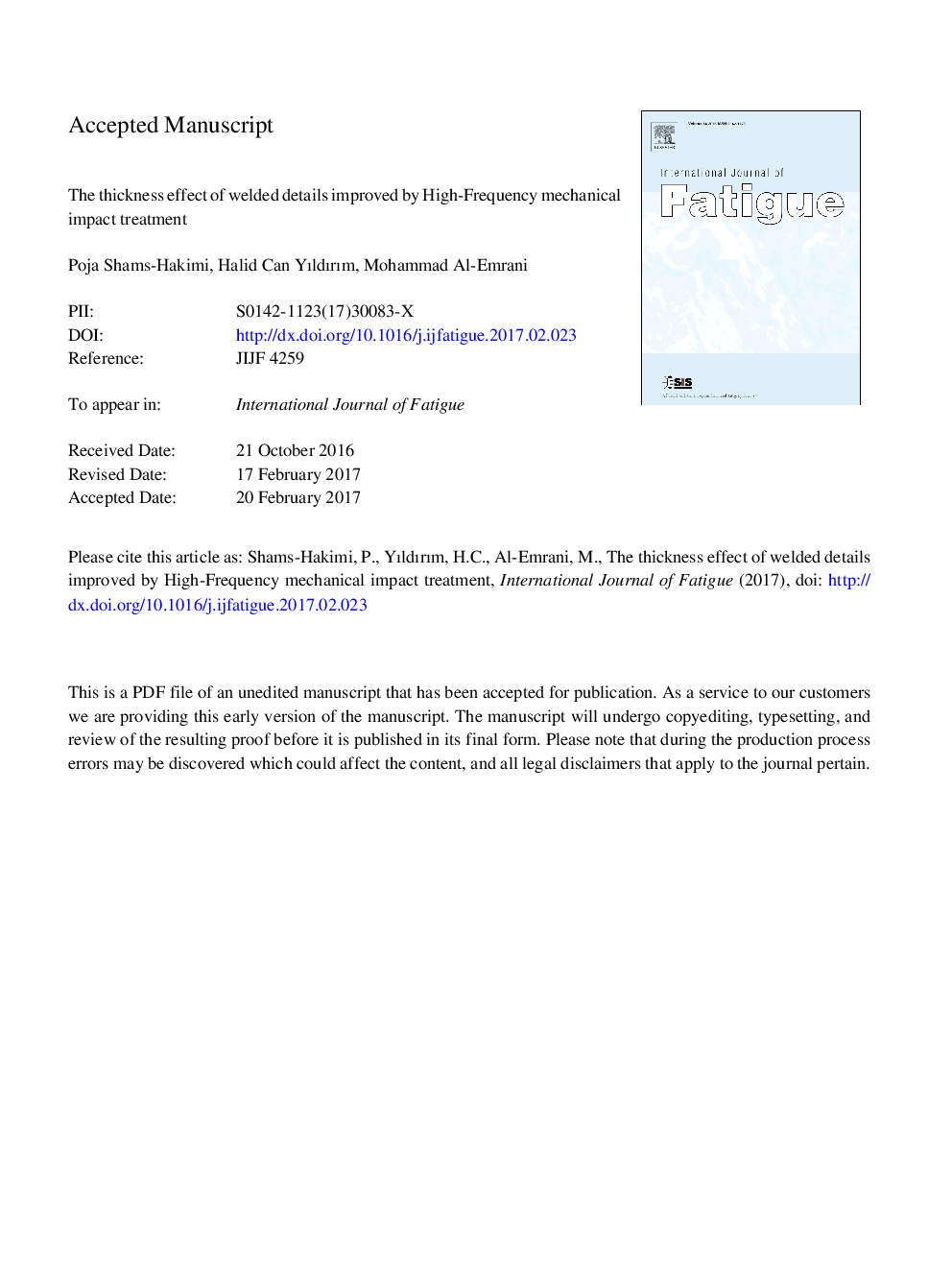| Article ID | Journal | Published Year | Pages | File Type |
|---|---|---|---|---|
| 5015281 | International Journal of Fatigue | 2017 | 33 Pages |
Abstract
High-frequency mechanical impact (HFMI) treatment can enable resource-efficient structural design by improving the fatigue strength of welded joints. While the thickness effect with reference to the fatigue of welded details is well known and covered in design codes, this effect has not been investigated systematically when the welds are improved by HFMI. In this study, experimental data of 582 small-scale fatigue tests on welded details with HFMI treatment has been collected from the literature and evaluated with respect to the thickness effect. In order to separate the effects of yield strength and thickness on the fatigue strength, a new approach was developed to adjust the data to a reference yield strength of 355 MPa prior to thickness evaluation. The test data covered transverse butt welds, details with non-load-carrying transverse attachments and details with non-load-carrying longitudinal attachments. The thickness effect of details with transverse attachments corresponds well with the IIW recommendation of n = 0.2, whereas transverse butt welds have a much weaker thickness effect. Details with longitudinal attachments show a “reverse” thickness effect.
Related Topics
Physical Sciences and Engineering
Engineering
Mechanical Engineering
Authors
Poja Shams-Hakimi, Halid Can Yıldırım, Mohammad Al-Emrani,
